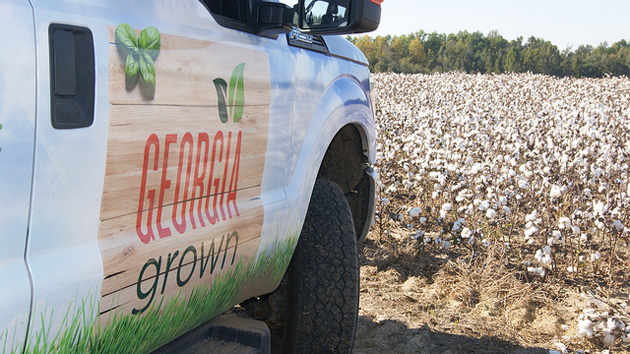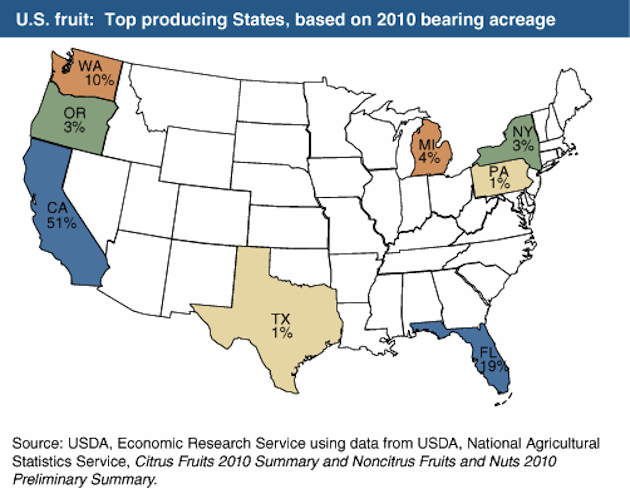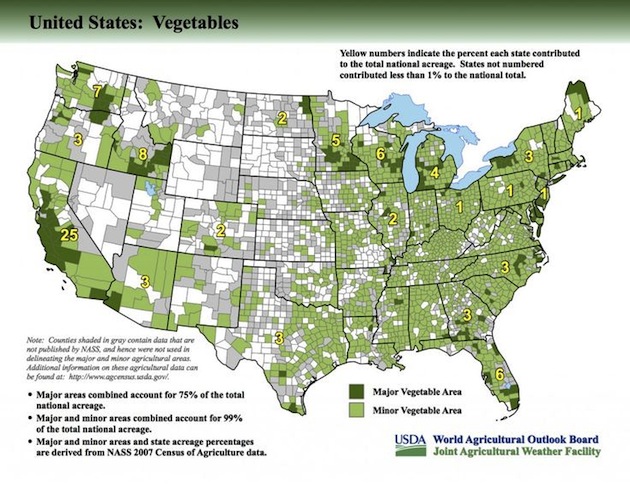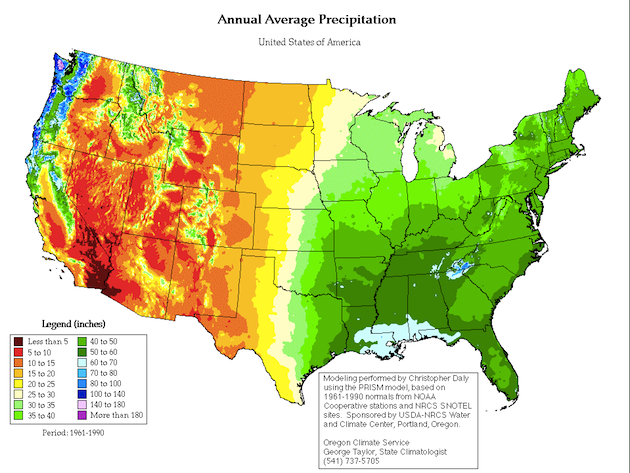
There’s a Place That’s Nearly Perfect for Growing Food. It’s Not California.
California is by far the dominant US produce-growing state—source of (large PDF) 81 percent of US-grown carrots, 95 percent of broccoli, 86 percent of cauliflower, 74 percent of raspberries, 91 percent of strawberries, etc.
But all three of its main veggie growing regions—the Imperial Valley, the Central Valley, and the Salinas Valley—face serious short- and long-term water challenges. As I recently argued in a New York Times debate, it's time to "de-Californify" the nation's supply of fruits and vegetable supply, to make it more diversified, resilient, and ready for a changing climate.
April 20, 2015 | Source: Mother Jones | by Tom Philpott
California is by far the dominant US produce-growing state—source of (large PDF) 81 percent of US-grown carrots, 95 percent of broccoli, 86 percent of cauliflower, 74 percent of raspberries, 91 percent of strawberries, etc.
But all three of its main veggie growing regions—the Imperial Valley, the Central Valley, and the Salinas Valley—face serious short- and long-term water challenges. As I recently argued in a New York Times debate, it’s time to “de-Californify” the nation’s supply of fruits and vegetable supply, to make it more diversified, resilient, and ready for a changing climate.
Here are maps of US fruit and vegetable production:


Now check out this map depicting average annual precipitation. The data are old—1961 to 1990—and weather patterns have changed since then as the climate has warmed over the decades. But the overall trends depicted still hold sway: The West tends to be arid, the East tends to get plenty of rain and snow, and the Midwest lands, well, somewhere in the middle. So the map remains a good proxy for understanding where water tends to fall and where it doesn’t, though the precipitation levels depicted for California look downright Londonesque compared to the state’s current parched condition.

Not only is California gripped in its worst drought in at least 1,200 years, but climate models and the fossil record suggest that its 21st-century precipitation levels could be significantly lower than the 20th-century norm, when California emerged as a fruit-and-vegetable behemoth.
So here’s an idea that could take pressure off California. In my Times piece, I looked to the Corn Belt states of the Midwest as a prime candidate for a veggie revival: Just about a quarter million acres (a veritable rounding error in that region’s base of farmland) from corn and soy to veggies could have a huge impact on regional supply, a 2010 Iowa State University study found.
